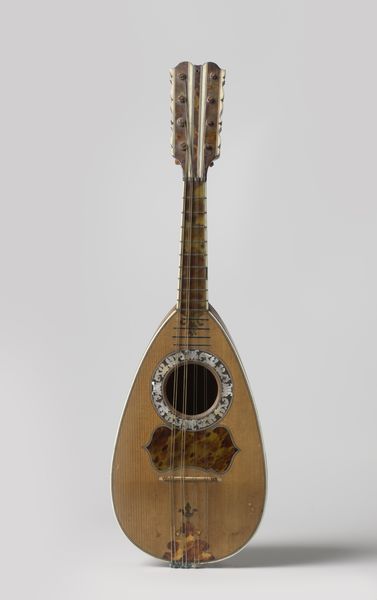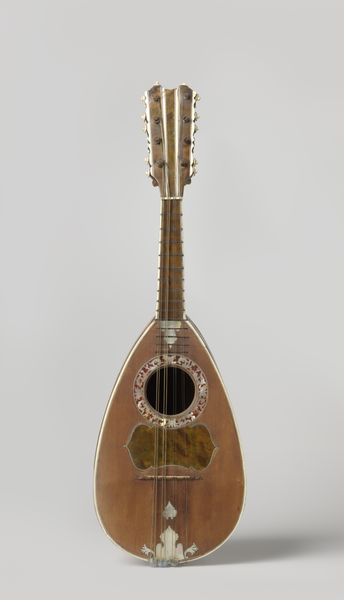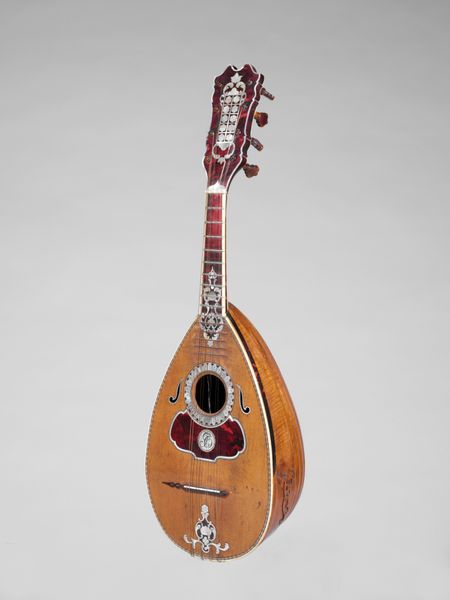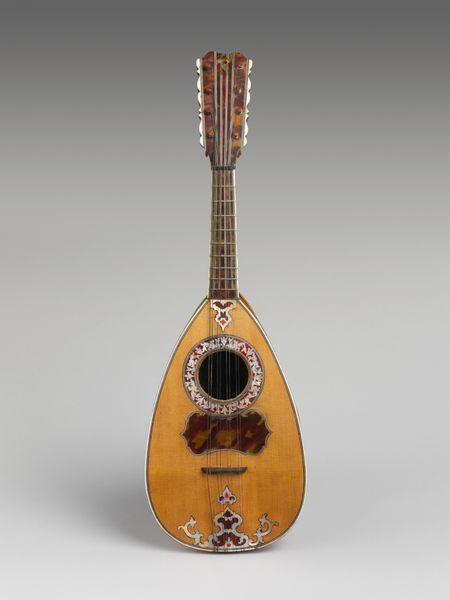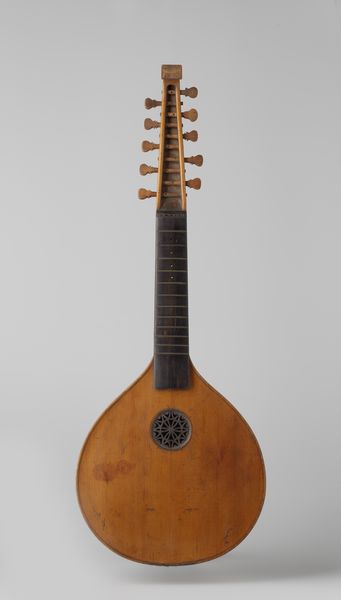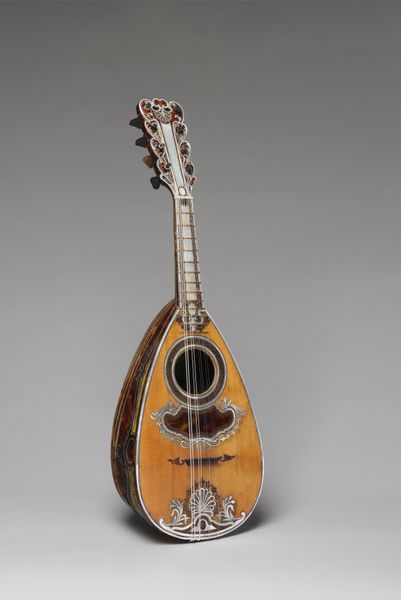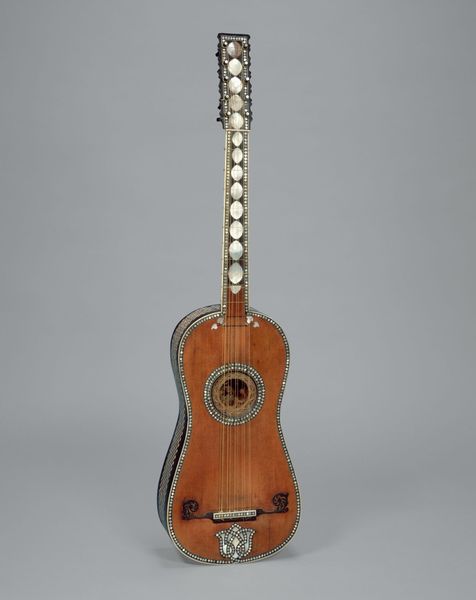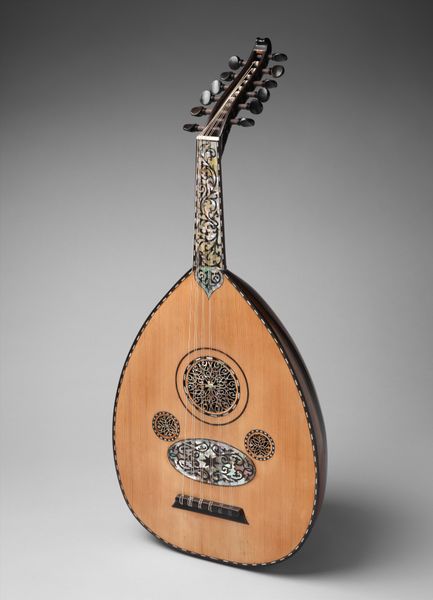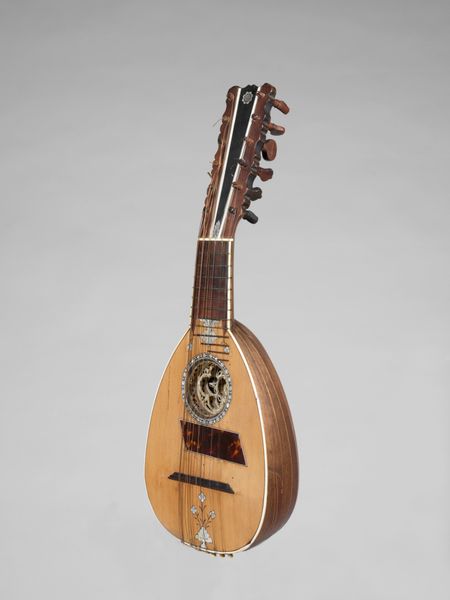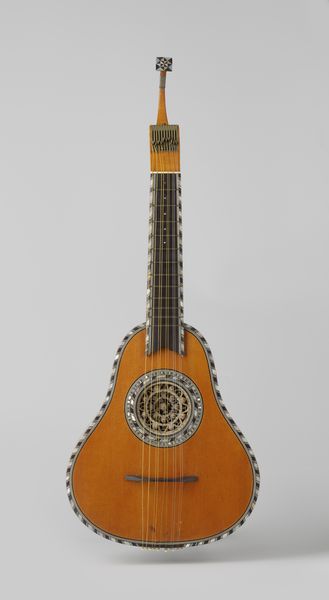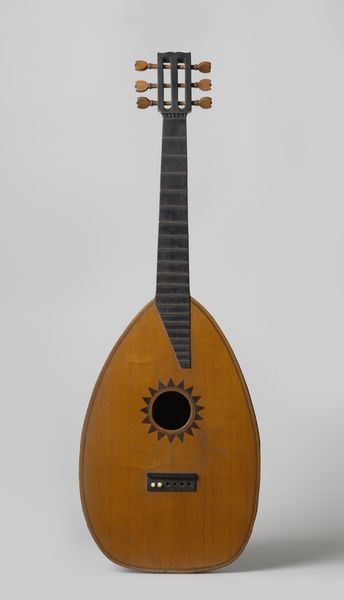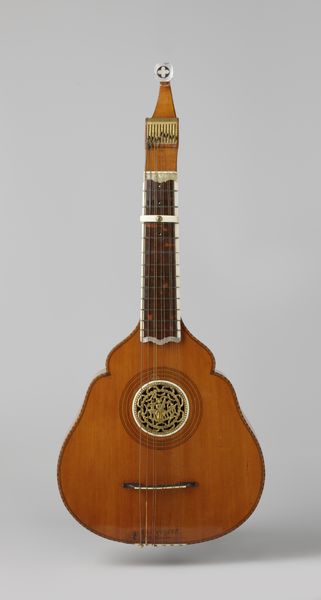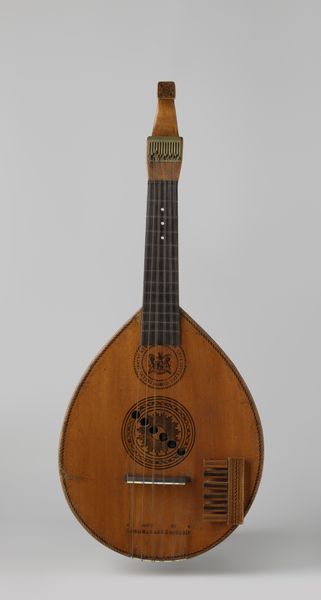
Dimensions: height 57.5 cm, width 17.3 cm, depth 12.5 cm
Copyright: Rijks Museum: Open Domain
Curator: Well, that's just lovely. Makes me want to be sitting in a sun-drenched piazza, doesn't it? The Neapolitan mandolin just *shimmers*. Editor: I notice immediately how restrained the instrument is in terms of ornament. The artist, Giovanni Vinaccia, working somewhere between 1770 and 1780, demonstrates a preference for linearity here—an interplay of vertical and curved lines creating a cohesive whole. Curator: See, that's the bit that gets me! The delicacy. You can just feel the care someone put into carving it, can't you? Imagine those long evenings…it must have filled rooms with such energy! It's practically *bursting* with song, still. Editor: Precisely. Note how the decorative carving functions: it’s not mere surface adornment. The lines guide the eye, emphasizing the instrument's elegant pear shape and drawing attention to its essential form, to its completeness as an instrument and object. The carving gives structure. Curator: True, and all that Baroque swirl! There is a lot going on, so detailed...a whole universe swirling there...But it must be more than *just* pretty. Were they trying to tell a story with it, you think? Editor: Possibly, but I'm drawn more to its craftsmanship. The use of wood and mother-of-pearl gives it a beautiful texture. The way it plays with light adds dimension, no? We could consider it from a purely material perspective... a tactile conversation. Curator: I do see what you're saying. But thinking about its story...someone actually *held* that. Isn’t that marvelous? Someone felt those curves. Probably played their heart out with it. And, now we’re looking at it, centuries later. Editor: Indeed. Considering both its materiality and craftsmanship, what it represents—the convergence of form and function—is truly striking. It resonates aesthetically and conceptually. Curator: Absolutely, beautifully put. It seems to capture not just the beauty of music but of living. Thank you. Editor: And for directing our ears and minds to contemplate form meeting function as an act of historical and personal expression.
Comments
No comments
Be the first to comment and join the conversation on the ultimate creative platform.
